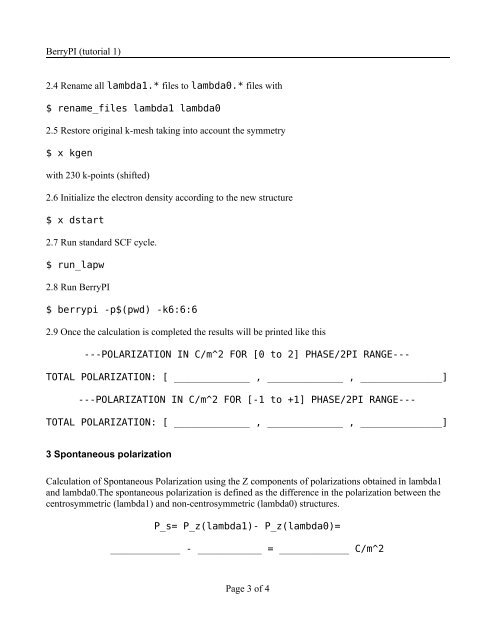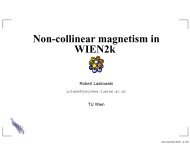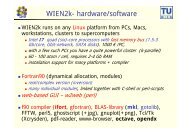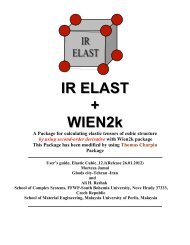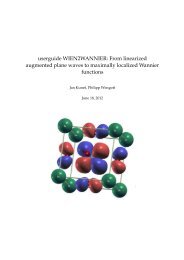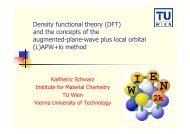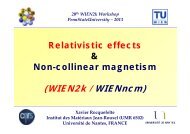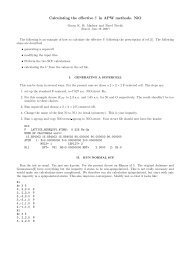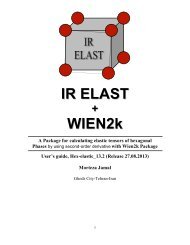Tutorial 1: Spontaneous polarization in BaTiO3 (approx ... - WIEN 2k
Tutorial 1: Spontaneous polarization in BaTiO3 (approx ... - WIEN 2k
Tutorial 1: Spontaneous polarization in BaTiO3 (approx ... - WIEN 2k
You also want an ePaper? Increase the reach of your titles
YUMPU automatically turns print PDFs into web optimized ePapers that Google loves.
BerryPI (tutorial 1)2.4 Rename all lambda1.* files to lambda0.* files with$ rename_files lambda1 lambda02.5 Restore orig<strong>in</strong>al k-mesh tak<strong>in</strong>g <strong>in</strong>to account the symmetry$ x kgenwith 230 k-po<strong>in</strong>ts (shifted)2.6 Initialize the electron density accord<strong>in</strong>g to the new structure$ x dstart2.7 Run standard SCF cycle.$ run_lapw2.8 Run BerryPI$ berrypi -p$(pwd) -k6:6:62.9 Once the calculation is completed the results will be pr<strong>in</strong>ted like this---POLARIZATION IN C/m^2 FOR [0 to 2] PHASE/2PI RANGE---TOTAL POLARIZATION: [ _____________ , _____________ , ______________]---POLARIZATION IN C/m^2 FOR [-1 to +1] PHASE/2PI RANGE---TOTAL POLARIZATION: [ _____________ , _____________ , ______________]3 <strong>Spontaneous</strong> <strong>polarization</strong>Calculation of <strong>Spontaneous</strong> Polarization us<strong>in</strong>g the Z components of <strong>polarization</strong>s obta<strong>in</strong>ed <strong>in</strong> lambda1and lambda0.The spontaneous <strong>polarization</strong> is def<strong>in</strong>ed as the difference <strong>in</strong> the <strong>polarization</strong> between thecentrosymmetric (lambda1) and non-centrosymmetric (lambda0) structures.P_s= P_z(lambda1)- P_z(lambda0)=____________ - ___________ = ____________ C/m^2Page 3 of 4


